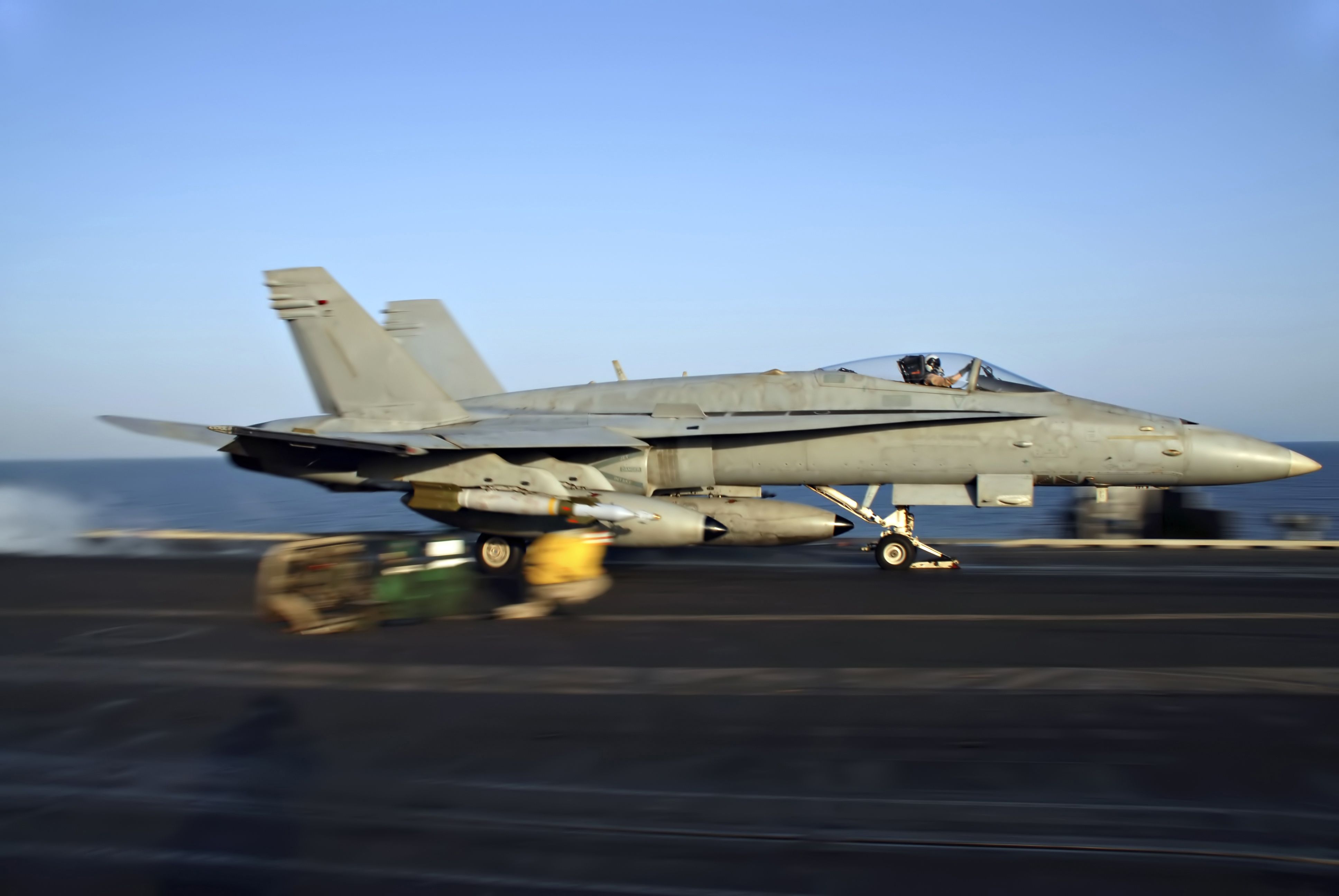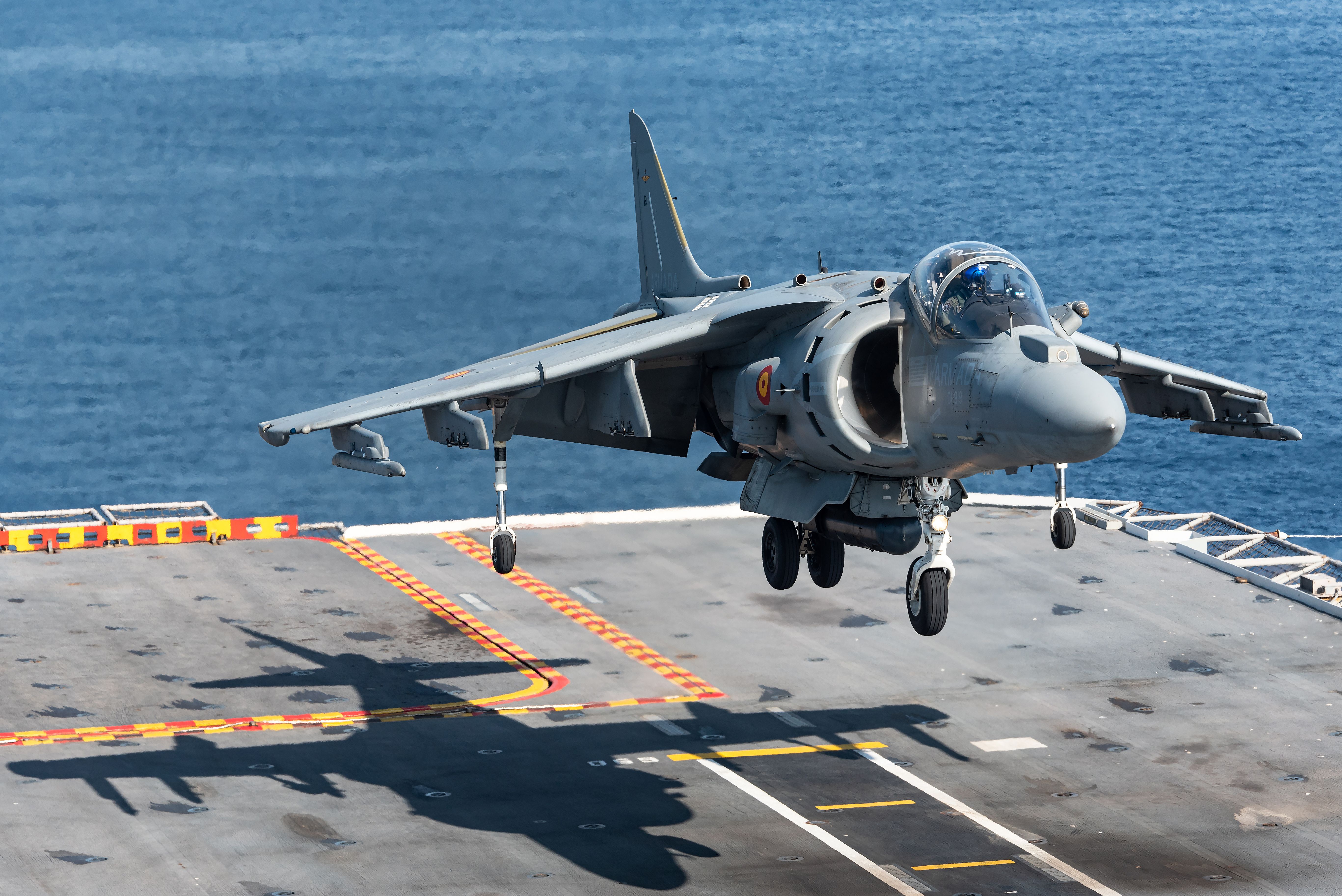Fighter jets are some of the most dexterous and maneuverable aircraft engineered by humankind. Anyone who has seen Top Gun can attest to their ability to climb, turn, and roll through the sky with ease. But their talents aren't just limited to when they are in the air; in fact, one of the most interesting features of some fighter jets are their ability to land on an extremely short runway aboard an aircraft carrier. So, what makes these special-purpose aircraft so unique, and why is it that they are able to land over such short distances? Let's take a closer look and find out.
The approach
As is the case with most planes, there are several actions that a fighter jet pilot needs to take long before their aircraft even touch the ground in order to ensure a safe landing, starting with assuming an ovular orbit around the carrier and waiting for clearance to land from Air Traffic Control (ATC). Once clearance has been granted, the pilot can begin their final approach, ensuring that the angle of descent is correct and the jet is lined up with the runway.
They are aided in these efforts by Landing Signal Officers (LSOs) that use a combination of radio communication and lights on the deck to either confirm the preconditions for a landing or tell the pilot to abort and try again. They are also aided by the onboard Fresnel Lens Optimal System (also known as "the lens"): a Fresnel lens attached to a gyroscope that reflects different combinations of colors of light depending on whether the approach is too high (amber above green), too low (amber below green), way too low (red), or just right (green; called "the meatball").
Get all the latest aviation news right here on Simple Flying.
The landing
Once the pilot has completed the above, the only thing left for them to do is to lower the tailhook and let the wires on deck do their job. These are no ordinary wires; in fact, they are made by weaving together high-tensile steel as thick as 1.5 inches (35 mm) and are capable of stopping a 55,000-pound (25,000 kg) aircraft traveling 150 miles per hour (240 kph) within 2 seconds or 350 feet (100 m).
It may seem counterintuitive, but it is worth noting that the pilot is expected to give full power to the engines as soon as their plane touches the ground so that they can take off again if the tailhook fails to catch a wire. Runways aboard aircraft carriers are slightly inclined at an angle of approximately 14 degrees for the same reason.
It is also important to note that there are multiple rows of wires spaced approximately 15 meters apart on the deck. This is done in order to increase the size of the touchdown area. After all, if a pilot comes in too low, then they risk crashing into the side of the carrier.
Have you ever flown in a fighter jet? What are your thoughts on the way that they land on short runways? Let us know in the comment section below.
Get the latest aviation news straight to your inbox: Sign up for our newsletters today.
Sources: Aviation for Aviators; HowStuffWorks; Interesting Engineering


